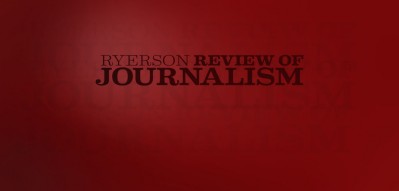“And everyone laughed. It was so preposterous, as if I said to you that the world is flat. People don’t realize how unanimous and overwhelming the conventional wisdom was.”
– Michele Landsberg, recalling an incident in the 1950s as a first-year student at the University of Toronto. She had told a group of students that women were the intellectual equals of men. (The Ottawa Citizen, November 13, 1992)
That quote hit me right in the forehead when I first read it. Landsberg was talking to a journalist at a Women in the Media conference, explaining the foundation for sexist attitudes that women still confront in the newsrooms and on the front page. But I saw parallels in that quote with attitudes towards aboriginal peoples.
A few years ago, a radio producer from the Maritimes told me, with no sense of embarrassment, that he didn’t think people in his region were interested in aboriginal stories. Furthermore, he promised to dump stories about aboriginal people into my lap. After all, I was the aboriginal affairs broadcaster for CBC Radio at the time.
I’ve heard it all, from the local producer who didn’t cover a breaking story because they “just did an Indian story last week,” to the editor who thought it wasn’t worth visiting an Indian caucus on election night because “they’re probably all drunk.” But the absolute best was the editor who told me her newspaper didn’t do Indian stories because “Indians don’t buy advertising.”
Things are improving. The coverage, overall, is more balanced, more knowledgeable and more insightful. The media seem to acknowledge that, in the past, they routinely overlooked important stories-not because they lacked time, money or expertise, but because the stories were about aboriginal peoples.
Like the attitudes about women, the most persistent vehicle for attitudes about aboriginal peoples has been the media, through their use of misleading or demeaning stereotypes. Rudy Platiel, who’s covered aboriginal issues for more than 20 years in The Globe and Mail, says Canadians have a “schizophrenic view of native people.” People may recognize parallels with the “super-morn” and “bitchy feminist.”
“The public image of native people is very unreal. It’s very Hollywood,” says Platiel. “On the one hand, there’s the noble redman, the saintlier-than-a-saint, environmentally conscious, more spiritually-in-tune-with-the-earth native person. Then there’s the drunken, bloodthirsty savage that we’ve been taught to fear, on the other.” This latter stereotype, of course, has evolved into the radical or militant warrior.
Since Columbus, Europeans have regarded aboriginal peoples as either simple children of nature, needing the guiding hand of civilized whites, or as dangerous renegades, needing the controlling hand of civilized whites. These two themes, Platiel adds, are still predominant when the media interpret aboriginal stories.
Take a column by William Johnson of the Montreal Gazette. It used the inquest into the suicide of a 13-year-old Indian boy in Manitoba, Lester Desjarlais, to buttress his arguments against self-government.” For those who think aboriginal self-government a panacea,” he Wrote, “one might recommend as remedial reading the inquest report.”
The father, Johnson alleged, “beat the mother and the boy before the parents separated. The boy complained that he had been raped anally by his uncle, Joe Desjarlais, [a relation] of the chief of the Sandy Bay reserve… those people and institutions who and which should have protected the young from the adult abusers instead protected the abusers, especially when from a politically powerful family.”
The corruption of an aboriginal child welfare agency, the “abuse of power and gross violation of rights” in this case was an example of the “chaos” people might expect if aboriginal peoples regained self-government, Johnson hinted.
He goes further. He says that the aboriginal-run agency “was founded amid accusations that the existing children’s aid society, staffed by whites, did not understand native culture and so made terrible decisions” affecting native children and families.
It wasn’t quite that simple. A provincial inquiry in the early eighties found white social workers routinely took aboriginal children from their families and placed them in white neighbourhoods with good, white middle-class values. Aboriginal parents, their homes and their families were deemed deficient because they were aboriginal.
So many aboriginal children were taken from their parents and placed in white foster homes outside the province, the judge concluded that the effect on aboriginal communities was nothing less than “cultural genocide.”
Johnson made it sound like a minor cultural misunderstanding. He was glossing over the facts, and echoing the sentiments of many Manitobans who saw the inquest report as a chance to further their views on self-government.
The facts are: when the province rushed to dump responsibility on the new aboriginal agencies, it failed to give them enough money or time to train workers or give them the experience they would need to deal with the tremendous problems in their communities. It created a ticking time bomb for disaster.
